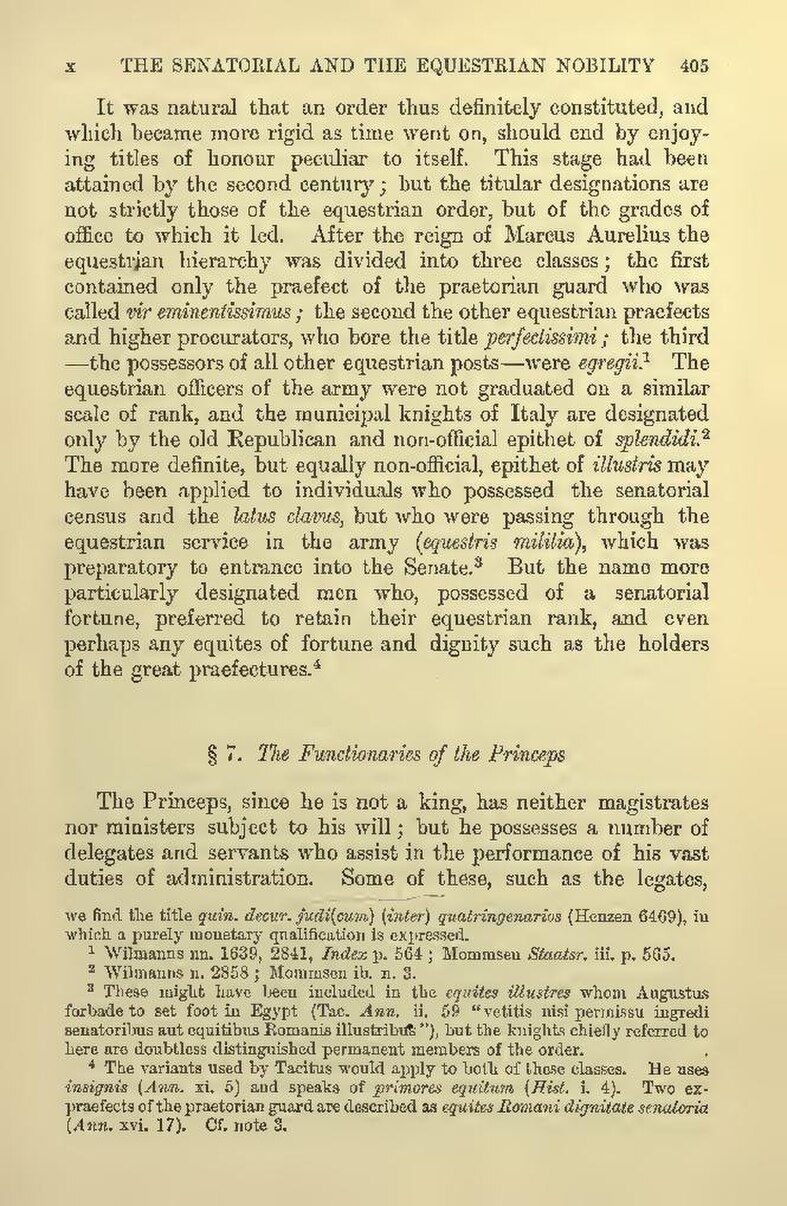It was natural that an order thus definitely constituted, and which became more rigid as time went on, should end by enjoying titles of honour peculiar to itself. This stage had been attained by the second century; but the titular designations are not strictly those of the equestrian order, but of the grades of office to which it led. After the reign of Marcus Aurelius the equestrian hierarchy was divided into three classes; the first contained only the praefect of the praetorian guard who was called vir eminentissimus; the second the other equestrian praefects and higher procurators, who bore the title perfectissimi; the third—the possessors of all other equestrian posts—were egregii.[1] The equestrian officers of the army were not graduated on a similar scale of rank, and the municipal knights of Italy are designated only by the old Republican and non-official epithet of splendidi.[2] The more definite, but equally non-official, epithet of illustris may have been applied to individuals who possessed the senatorial census and the latus clavus, but who were passing through the equestrian service in the army (equestris militia), which was preparatory to entrance into the Senate.[3] But the name more particularly designated men who, possessed of a senatorial fortune, preferred to retain their equestrian rank, and even perhaps any equites of fortune and dignity such as the holders of the great praefectures.[4] § 7. The Functionaries of the Princeps
The Princeps, since he is not a king, has neither magistrates nor ministers subject to his will; but he possesses a number of delegates and servants who assist in the performance of his vast duties of administration. Some of these, such as the legates,
- [Footnote: we find the title quin. decur. judi(cum) (inter) quatringenarios (Henzen 6469), in
which a purely monetary qualification is expressed.]
- ↑ Wilmanns nn. 1639, 2841, Index p. 564; Mommsen Staatsr. iii. p. 565.
- ↑ Wilmanns n. 2858; Mommsen ib. n. 3.
- ↑ These might have been included in the equites illustres whom Augustus forbade to set foot in Egypt (Tac. Ann. ii. 59 "vetitis nisi permissu ingredi senatoribus aut equitibus Romanis illustribus"), but the knights chiefly referred to here are doubtless distinguished permanent members of the order.
- ↑ The variants used by Tacitus would apply to both of these classes. He uses insignis (Ann. xi. 5) and speaks of primores equitum (Hist. i. 4). Two ex-*praefects of the praetorian guard are described as equites Romani dignitate senatoria (Ann. xvi. 17). Cf. note 3.
